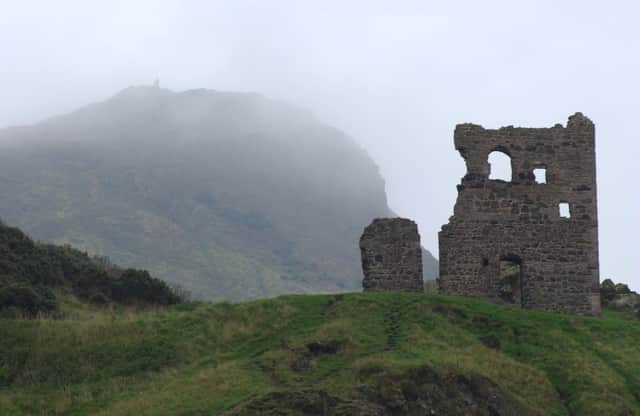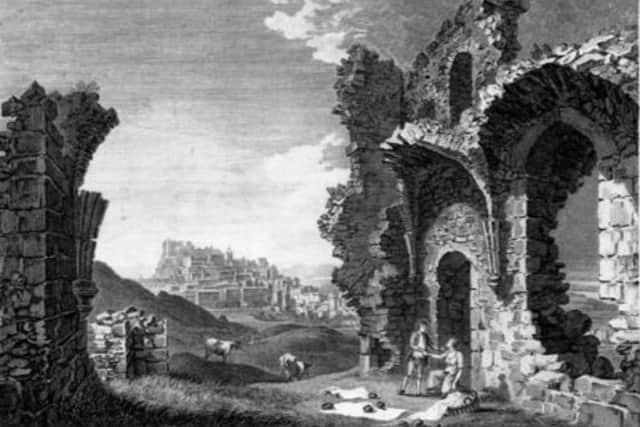St Anthony's Chapel: What we know about Edinburgh's mysterious ruin


The mysterious medieval chapel, which once featured a 40-foot-high tower, but now stands in a ruinous state on a flat outcrop of rock overlooking Edinburgh’s Holyrood Park, has left historians baffled for generations.
With neither its construction date or exact purpose known, the picturesque structure exists today as a curious tourist attraction, with hundreds visiting and passing it daily on hikes up Arthur’s Seat.


Origins unclear
Advertisement
Hide AdAdvertisement
Hide AdMost experts agree that the chapel was built no later than the very early 15th century, as, in 1426, it was recorded in a letter from the Holy See that Pope Martin V had supplied funds for its repair along with vestments for the priest.
Around the time of its founding, the chapel was situated in the part of Holyrood Park under the ownership of Kelso Abbey, and it became a popular place of pilgrimage.
Some have suggested a possible link with the Preceptory of St Anthony, a skin hospice founded in Leith by James I around 1430. St Anthony’s relics were associated closely with cures for the painful skin disease erysipelas, which was rife in 15th century Scotland, and became widely known as St Anthony’s Fire.
Given its commanding position and panoramic views of Port of Leith and the Firth of Forth, is has been put forward that St Anthony’s may have also been used as a beacon tower to guide ships so that they could acknowledge the saint.
Falling into ruin
Precisely when and why St Anthony’s Chapel fell into disrepair is unclear, though evidence suggests that it met its downfall in the 150-year period between the reformation and the signing of the Act of Union.
Physical records indicate that the last chaplain of St Anthony’s departed the building in 1581, while a fascinating engraving by 18th century English artist Thomas Hearne informs us that the chapel was in a ruinous state by 1779, with little more than the façade and a portion of the crumbling south west wall having survived.
Skeletal remains
Excavations around St Anthony’s Chapel down the centuries have revealed it was also a grave site, and human remains have been unearthed on numerous occasions – sometimes by accident.
In one incident, in June 1883, a group of young boys had been innocently playing among the ruins when they stumbled upon a quantity of dry bones.
Advertisement
Hide AdAdvertisement
Hide AdUpon inspection of the skeletal remains, it was concluded that, in spite of their fair state of preservation, the bones were of considerable age.
Little has emerged in recent years to shed further light on the chapel’s origins.
City Archaeologist John Lawson feels it’s high time St Anthony’s Chapel and its beginnings was studied in more detail.
Speaking to the Evening News he said: "It's certainly an intriguing monument, and I personally would love to learn more about it.
“There was some excavation work done there a number of years ago, but I don't think the results were ever published.
“The truth is, we don’t know an awful lot about St Anthony’s, and I would say a lot more needs to be done to figure out the origins of this fascinating city landmark.”
The Evening News is supporting Forever Edinburgh, a joint campaign between the City of Edinburgh Council, Edinburgh Tourism Action Group (ETAG) and VisitScotland. This encourages people to rediscover the city, its stories and places while supporting local businesses, promoting attractions, shops, bars and restaurants as lockdown eases.
Comments
Want to join the conversation? Please or to comment on this article.
